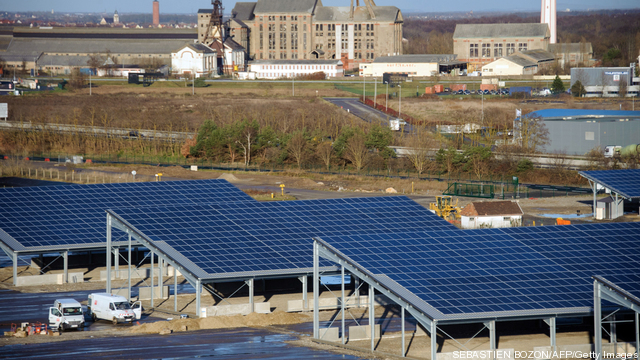
The solar business has been overshadowed in the past two years by rapidly declining prices, related “trade wars” replete with accusations of dumping on global markets and the failure of a high-profile company – Solyndra – pushing an unproved technology.
But solar power has in the past decade gone from a hippie style accessory and an expensive small-scale solution to a large, proven generation source with installations that can rival and exceed the scale of competing fossil fuel plants. Nonetheless, financing remains a fundamental challenge, with many projects highly dependent on market forecasts that have too little historic data for banks wary of lending to any but the most traditional enterprises at a time of intense regulatory oversight.
Corporations and other deep-pocketed groups, some with inherent interests in the health of the solar business, have begun funding mergers and acquisitions in the sector, providing a floor for an industry that looked set to go into price-driven consolidation free fall. Leading global solar firm Yingli Green Energy Americas Director of Business Development Matthew Sachs told the AGRION Energy and Environment Summit in New York City this week that the company has faced 70-80% declines in pricing for its solar panels in the past five years. Costs have been falling for many inputs as well, but the business has been painful, and “rationalization of capacity” is a major rationale for M&A.
There are three major risks for projects in the solar space today, Sachs said:
– Execution risk: Sachs pairs this with the performance risk for solar panels, a high-profile issue previously covered on Breaking Energy. Both of the risks are real for investors and deal counterparties, Sachs said, but the lengthening history of the industry at scale has alleviated this problem. Good power purchase agreements over long periods and contracts with proven suppliers can limit risk.
– Payment risk: Again, long-term PPAs with larger utility companies make this less of an issue for many projects, particularly in markets driven by compliance with clean-energy or emissions-reduction regulatory goals. Where solar is used in a distributed generation format for a corporate or retail customer, suppliers may need to dig into the balance sheet more thoroughly, Sachs says.
– Policy: This is the biggest issue, Sachs said, echoing the comments of other panelists from Gestamp Solar and law firm Morrison Foerster on the panel at the AGRION event. The retroactive changes to European subsidy policy for solar, combined with the outstanding cases on dumping of solar panels and components in markets around the world (with the US-China case the highest-profile), it is extremely difficult for investors or dealmakers to assess their risk in a new solar project. “The good news is that there are a lot of decisions that should be forthcoming in the next few months,” Sachs said, providing guidance for the market.
